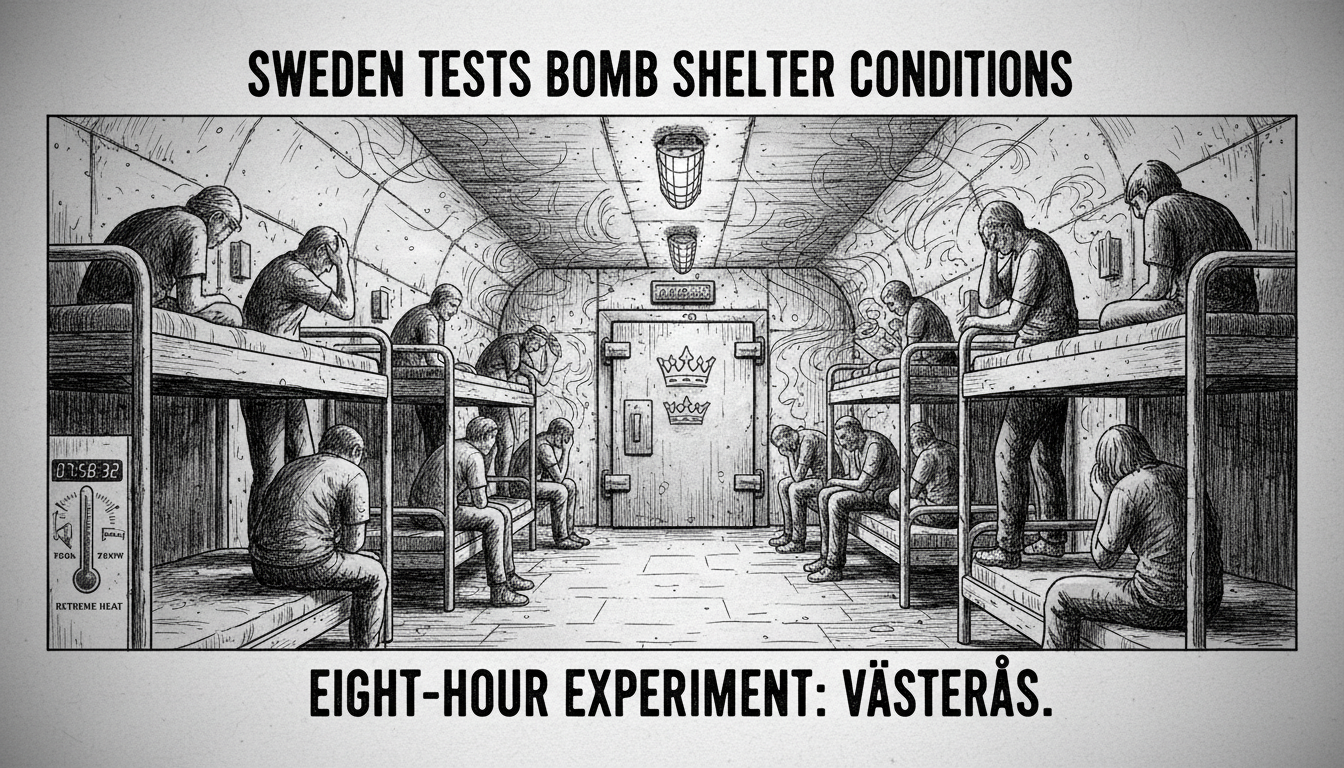Thirty people spent an entire workday locked inside a protective shelter in Västerås. They shared just 22 square meters of space from 8:30 AM to 4:30 PM on Wednesday. Each person had only 0.75 square meters of personal space during the unusual test.
The Västerås municipality organized this experiment with housing company Mimer and the Swedish Civil Contingencies Agency. Officials designed the test to evaluate how protective shelters function during extended occupation. This marks the first such test conducted in Sweden since the 1990s.
Participants experienced periodic power and internet outages during the shelter test. They used portable toilet containers instead of regular facilities. The experiment revealed practical challenges of extended shelter confinement that theoretical planning might miss.
Security strategist Johan Erikols participated in the test. He identified heat and ventilation as the most difficult aspects. 'We mainly focused on keeping the ventilation running,' Erikols said in a statement. 'This happened according to a schedule.'
Johan Ahlström, a risk engineer with Västerås municipality, reported initial temperatures reached 30 degrees Celsius. Crews eventually managed to reduce the heat by several degrees. 'The first hour was tough for many people,' Ahlström acknowledged. 'I think many were surprised by how loud the ventilation unit was and that it would become so hot.'
Many participants brought blankets expecting cold conditions underground. Instead, they encountered sweltering heat and humidity. The temperature miscalculation demonstrates how real-world conditions can differ from expectations.
Participants also reported anxiety about using the portable toilets in the crowded space. The eight-hour confinement revealed both physical and psychological challenges of shelter life.
This test comes as Sweden has recently reinstated civil defense planning after decades of reduced focus. The country has begun updating its Cold War-era shelter system amid changing European security dynamics. The experiment provides valuable data for modernizing Sweden's civil protection infrastructure.
The results will help planners design better shelter environments for future emergencies. They highlight the importance of adequate ventilation, temperature control, and privacy considerations. These factors become critical when people must remain confined for extended periods.
Sweden maintains approximately 65,000 registered protective shelters across the country. They have capacity for about seven million people. Many require updating to meet contemporary standards and population needs.
The Västerås experiment represents a practical approach to emergency preparedness testing. Rather than relying on theoretical models, officials gathered real-world data about human endurance in confined spaces. This information could prove valuable for municipalities nationwide as they review their emergency response capabilities.

